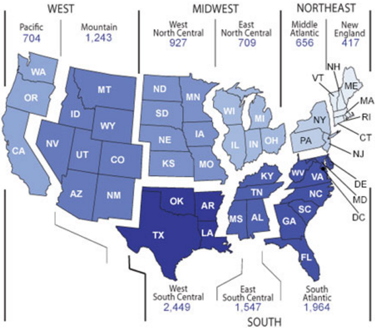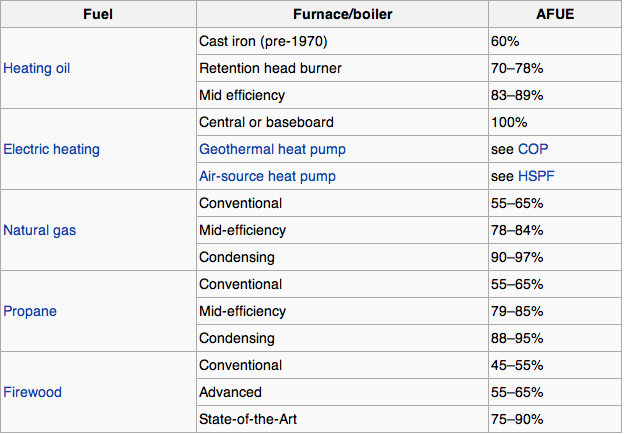 Home - Garden
Home - Garden
Home
 Home - Garden
Home - Garden
|
| HVAC | Air Conditioning | Gas Furnace System | Boiler hot water Heating | Heating and Cooling Costs |
Efficient Home Design | Department of Energy
Electrify your home - Rewiring America.org
Heat Pumps: The Future of Domestic Heating | power.com

Note: I couldn't find any web sites that had a good summary of this and I haven't had time to figure it all out myself. Here a cursory summary, but I need to spend more time to be comfortable with it.
Brands:
At Central air conditioner Brand Reliability | ConsumerReports they show American Standard, Lennox, Trane, and Carrier as the most reliable.
They had a 20-24% failure rate over a year.
The others weren't that much worse with 27-29% failure.
High end furnaces models are 2 stage variable speed. They normally operate at 65% efficiency and kick it up to high when needed. A variable speed motor allows SEER ratings over 16.
The fan can operate to circulate air even when the heating element is off to better distribute air in the home.
They are also quieter when running at low speed.
A downside is the high end models have more components that could break.
See AFUE - Annual fuel-utilization-efficiency for different fuels below.
Cost - Savings
A 95% efficiency model will cost about $1,500 more than an 80% efficient model ($9,000 vs $7,500) for a 70,000 BTU, 2.5 Ton unit, with installation , without duct work.
You will save about $250 per year in energy costs, more in the south and less in the north.
So the payback is about 6 years.
Sizing:
Note: The following is a simplified sizing guideline. A HVAC professional will take into account, insulation, construction, the size and type of windows, shade trees, etc.
For central latitudes MD, KY, KS,
Sq ft x 20 = A/C BTU/hour
Sq ft x 40 = Heat BTU/hour
12,000 BTU = 1 Ton
e.g. for a 1500 sf: 2.5 Ton, 60,000 BTU
US Department of Energy (DOE)
| Zone | Cooling | Heating | |||
|---|---|---|---|---|---|
| CDD | BPU/sf <1,000 sf* | BPU/sf >1,000 sf | HDD | BPU/sf | |
| 1 | <2,000 | 21 | 18-21 | >7,000 | 50-60 |
| 2 | <2,000 | 21 | 18-22 | 5,500-7,000 | 45-50 |
| 3 | <2,000 | 23 | 19-23 | 4,000-5,499 | 40-45 |
| 4 | <2,000 | 24 | 19-23 | <4,000 | 35-40 |
| 5 | ≥2,000 | 25 | 20-24 | <2,000 | 30-35 |
Use a lower BTU number for a well insulated house and higer number for a poorly insulated house.
I don't know why DOE numbers for CDD aren't more specific, but hey, it's our government. See below for EIA data.
Based on tables at How to Size Your Air Conditioning System at AC 4 Life
Note: the zones at AC 4 Life are reversed 1 is south from those at DOE (1 is north)

| ZONE NUMBER | THERMAL CRITERIA | |
|---|---|---|
| IP Units | SI Units | |
| 1 | 9000 < CDD50°F | 5000 < CDD10°C |
| 2 | 6300 < CDD50°F ≤ 9000 | 3500 < CDD10°C ≤ 5000 |
| 3A and 3B | 4500 < CDD50°F ≤ 6300 AND HDD65°F ≤ 5400 | 2500 < CDD10°C ≤ 3500 AND HDD18°C ≤ 3000 |
| 4A and 4B | CDD50°F ≤ 4500 AND HDD65°F ≤ 5400 | CDD10°C ≤ 2500 AND HDD18°C ≤ 3000 |
| 3C | HDD65°F ≤ 3600 | HDD18°C ≤ 2000 |
| 4C | 3600 < HDD65°F ≤ 5400 | 2000 < HDD18°C ≤ 3000 |
| 5 | 5400 < HDD65°F ≤ 7200 | 3000 < HDD18°C ≤ 4000 |
| 6 | 7200 < HDD65°F ≤ 9000 | 4000 < HDD18°C ≤ 5000 |
| 7 | 9000 < HDD65°F ≤ 12600 | 5000 < HDD18°C ≤ 7000 |
| 8 | 12600 < HDD65°F | 7000 < HDD18°C |
 Cooling Degree Days
Cooling Degree Days
| Census Areas | 2,012 | 2,013 | 2,014 | 2,015 |
|---|---|---|---|---|
| New England | 564 | 540 | 420 | 557 |
| Middle Atlantic | 815 | 683 | 596 | 801 |
| East North Central | 974 | 690 | 610 | 730 |
| West North Central | 1,221 | 892 | 814 | 940 |
| South Atlantic | 2,162 | 2,000 | 2,001 | 2,392 |
| East South Central | 1,762 | 1,441 | 1,493 | 1,722 |
| West South Central | 2,915 | 2,536 | 2,474 | 2,745 |
| Mountain | 1,572 | 1,462 | 1,432 | 1,485 |
| Pacific | 917 | 892 | 1,068 | 1,075 |
| U.S. Average | 1,494 | 1,306 | 1,297 | 1,487 |
See:
Do You Know Your Building Science Climate Zone? | energyVanguard.com
Commercial Buildings Energy Consumption Survey (CBECS) - U.S. Energy Information Administration (EIA)
At How to Figure BTUs for HVAC Sizing | Home Guides | SF Gate they say,
"At The biggest problem with sizing your furnace and air conditioner is that so few people know how to do it accurately. Even many contractors rely on a simplified rule of thumb (which is, incidentally, illegal) that translates square footage into a one-size-fits-all answer. The result is usually oversized units that cost more, use more energy and fail to maintain the temperature you desire inside your home. Professional calculation factors in many of your home's unique characteristics to obtain the correct HVAC sizing. Online calculators can often get you close. So will calculating some of these measurements yourself. It may not be as precise as an engineer's, but it will ensure you can spot any gross inaccuracies."
See:
BTU Calculator
How to Size Your Air Conditioning System at AC 4 Life
AFUE - Annual fuel-utilization-efficiency

See Air Conditioner Efficiency